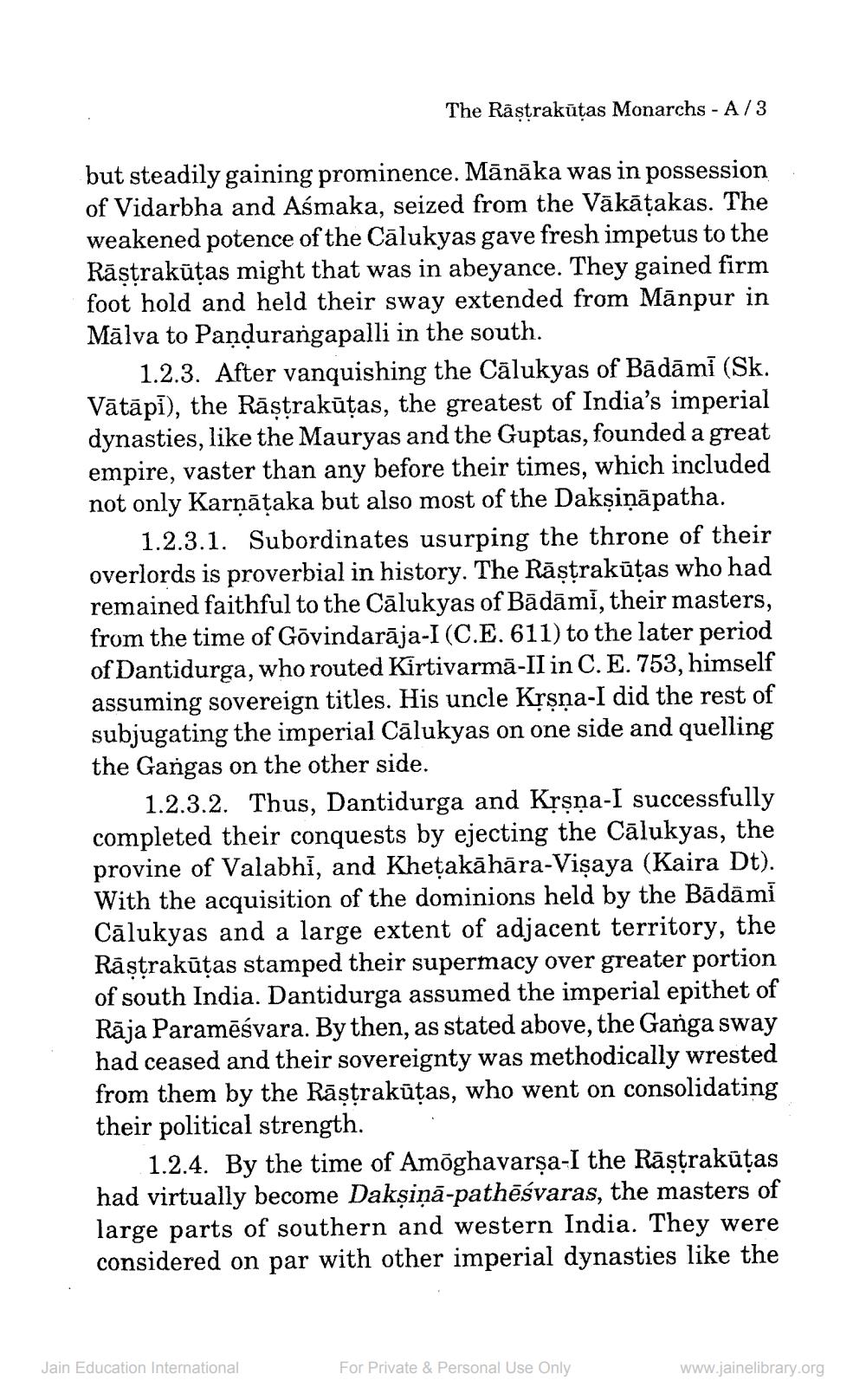________________
The Raṣṭrakūtas Monarchs - A/3
but steadily gaining prominence. Mānāka was in possession of Vidarbha and Aśmaka, seized from the Vākāṭakas. The weakened potence of the Calukyas gave fresh impetus to the Rāṣṭrakūtas might that was in abeyance. They gained firm foot hold and held their sway extended from Mānpur in Mälva to Pandurangapalli in the south.
1.2.3. After vanquishing the Calukyas of Bādāmi (Sk. Vātāpi), the Rāṣṭrakūtas, the greatest of India's imperial dynasties, like the Mauryas and the Guptas, founded a great empire, vaster than any before their times, which included not only Karṇāṭaka but also most of the Daksiṇāpatha.
1.2.3.1. Subordinates usurping the throne of their overlords is proverbial in history. The Raṣṭrakūtas who had remained faithful to the Calukyas of Bādāmi, their masters, from the time of Govindarāja-I (C.E. 611) to the later period of Dantidurga, who routed Kirtivarma-II in C. E. 753, himself assuming sovereign titles. His uncle Kṛṣṇa-I did the rest of subjugating the imperial Calukyas on one side and quelling the Gangas on the other side.
1.2.3.2. Thus, Dantidurga and Kṛṣṇa-I successfully completed their conquests by ejecting the Calukyas, the provine of Valabhi, and Kheṭakāhāra-Viṣaya (Kaira Dt). With the acquisition of the dominions held by the Bādāmi Calukyas and a large extent of adjacent territory, the Räṣṭrakūtas stamped their supermacy over greater portion of south India. Dantidurga assumed the imperial epithet of Rāja Paramēśvara. By then, as stated above, the Ganga sway had ceased and their sovereignty was methodically wrested from them by the Rāṣṭrakūtas, who went on consolidating their political strength.
1.2.4. By the time of Amōghavarṣa-I the Raṣṭrakūtas had virtually become Dakṣiņā-pathēśvaras, the masters of large parts of southern and western India. They were considered on par with other imperial dynasties like the
Jain Education International
For Private & Personal Use Only
www.jainelibrary.org




